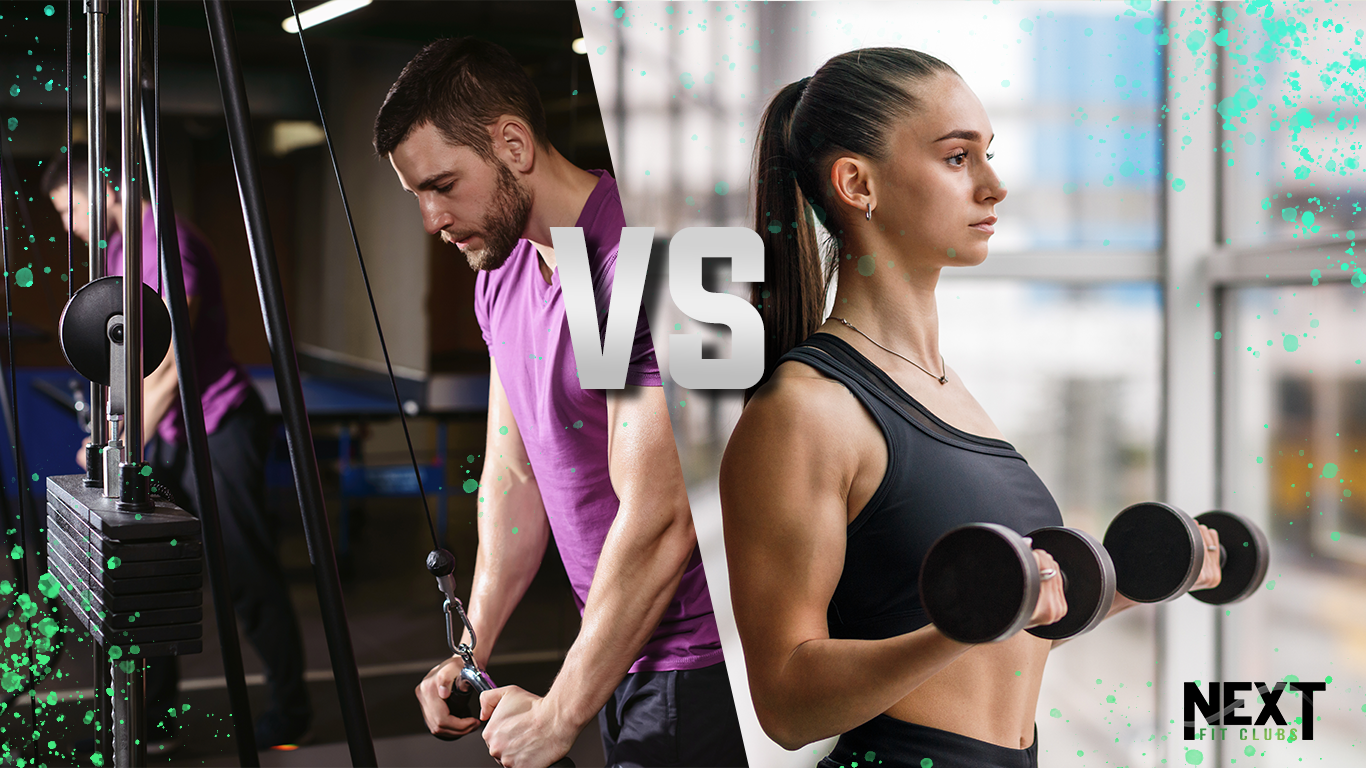Whether you decide to beeline it to the squat rack, or jump from machine to machine, one thing we can all agree on is that strength training provides many benefits like improving your balance, helping with bone density, or to help maintain a healthy weight. However, if you ever wondered which of the two is the better option, then look no further. First, in order to tell which is better, we need to dive into the pros and cons of both a Fixed Form machine and a Free Weight that you have full control over.Â
What is a Fixed Form Machine?
A fixed form machine is any machine at the gym which requires the user to adjust the machine to their height as well as adding the desired resistance, or weight, in order to be properly used. There are two types of machines that you can find at any gym. The first type is a pin loaded machine which are usually newer machines in which the resistance can be adjusted by using a weight stack. This works by taking the pin attached to the stack and inserting it into the desired weight stack. The other type, known as a plate loaded machine requires the user to manually load their weight onto the machine using the plates around the gym. Sometimes, you may even need to add weight to two separate compartments if you can perform isolations, or one side, with it.Â
What are the Benefits?
The fixed form machine is a wonderful tool to utilize in the gym and it is especially popular among beginner level athletes who struggle with things like form and movement. Unlike a barbell, these machines are usually labeled with instructions on how to use it properly. Furthermore, most of these machines, especially pin loaded, have multiple levers which allows the user to properly adjust the machine in any way they see fit for each individual. For example, on the âQuad Extensionâ machine, you are able to pull the seat back or forward to match the size of your leg as well as the angle of depth which can also vary among individuals. This in turn makes these machines very safe to use.
Each machine is specifically designed to work a certain way. It typically has a track that it follows to minimize any opportunity for incorrect form, although that doesn’t mean that you canât still make mistakes. Regardless, the track that you are on will not change when completing the exercise, allowing for the working muscles to be more isolated. This eliminates the need to stabilize yourself more with secondary muscles like you would using free weights. In addition to muscle isolation, using machines forces your muscles to constantly stay under tension during your entire set. That means even when you finish the movement, you still feel the weight on you before you go for your next rep until you fully release the tension. By allowing your isolated muscles to feel constant tension, it allows the user to focus less on the movement they are trying to perform and more on the intensity and effort done in order to move the weight.Â
What is a Free Weight?
Free weights are the main course of the gym. These can include things such as barbells, dumbbells, plates, and kettlebells. These are much harder in contrast to machines since you are the one physically moving the weight and in order to move the weight correctly, your stabilizer muscles are also in use here, providing another challenge. While commonly seen as the âking of the gymâ, free weight exercises are only as useful as they are performed. Going too heavy or not heavy enough can lead to complications such as injury, getting too tired too quickly, or even simply not training hard enough to see results.Â
Why Use Free Weights?
Free weights give you the advantage of having total body control over the weight. Whether you are doing a back squat or even a bench press, securing your core to ensure your stabilizer muscles are being worked is essential to preventing injury. While you are able to load up a machine with more weights compared to using free weights, free weights will always still require you to use more muscle groups which leads into the next point. By simultaneously working more than one muscle group rather than isolating them, it’s more relatable in the real world to use your whole body rather than to isolate different muscles. This allows for more efficiency in regards to getting the most out of your workout.Â
Since you are using more muscles with free weights, this also gives the user an endless amount of exercises that can be performed. By being able to manipulate your bodyâs position with different angles and even grip can add much more variety to your workout depending on the exercises being performed. This is where free weights have the advantage over a fixed form machine which typically is only designed to work a certain type of way. It is difficult to isolate muscles with free weights but not impossible. For example, a barbell back squat is primarily targeting your legs, but your shoulder blades and upper back along with your core need to be engaged.Â
So Which One is Better?
The short answer is neither. Both free weights and machines are beneficial towards your overall fitness goals. Depending on those goals, you might find more benefits using free weights to engage more muscles as well as for more stability training. From there, you can also incorporate machines in order to target a specific muscle in a better and more intense way. A combination of both methods can result in an overall well rounded routine to help you reach your goals.Â





0 Comments